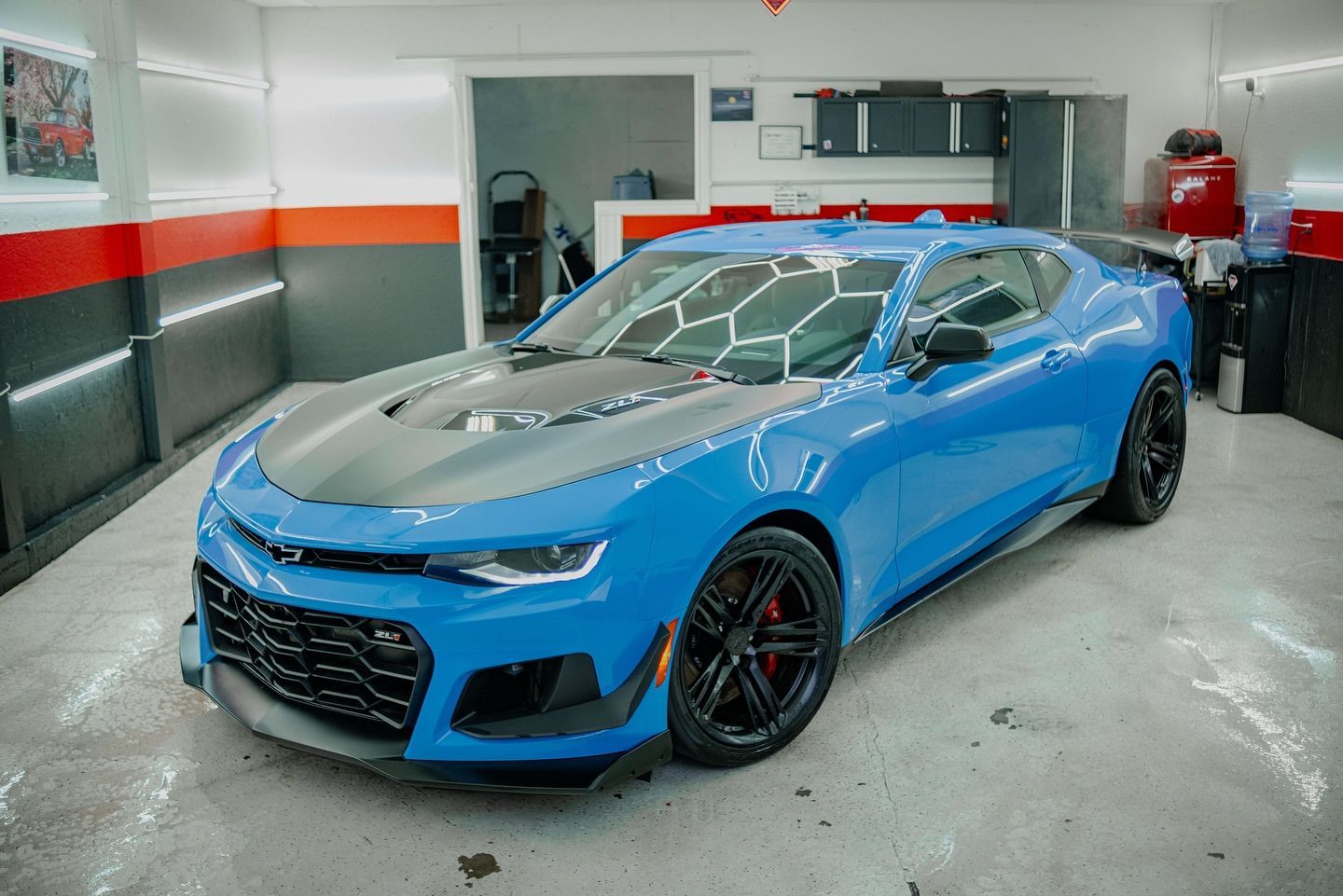Your car isn't just transportation—it's a statement.

Your car isn't just transportation—it's a statement. That glossy finish catching sunlight as you cruise down the street? Yeah, that matters. But the real question isn't whether to protect your paint; it's how to protect it.
Let's cut through the noise about Ceramic Coating and Paint Protection Film (PPF). No marketing fluff, just facts.
Ceramic Coating: The Glass Shield
Ceramic coating creates an invisible layer of liquid glass on your paint. Think of it as microscopic armor that bonds directly to your clear coat.
What happens when you apply ceramic coating? The silica dioxide creates a hydrophobic surface—water beads up and slides off, taking dirt with it. That's not magic; it's chemistry.
The coating isn't just about water, though. It's about UV protection, chemical resistance, and that deep, wet-look gloss that makes heads turn.
But here's what most people miss: ceramic coating isn't a force field. It won't stop rock chips or prevent scratches from that shopping cart that escaped the parking lot corral. It's protection against the elements, not physical damage.
PPF: The Invisible Armor
Paint Protection Film is exactly what it sounds like—a urethane film applied directly to your paint. But this isn't your grandfather's car bra.
Modern PPF is virtually invisible. The high-grade thermoplastic urethane is designed to take abuse—road debris, minor scratches, bird droppings full of acid—and heal itself. That's right, with heat application or sometimes just sunlight, light scratches disappear.
The film absorbs impact. That rock kicked up by the truck ahead of you? PPF takes the hit so your paint doesn't have to.
But PPF isn't perfect either. It's more expensive than ceramic coating, and installation isn't a DIY project unless you have professional-grade skills and equipment. The edges can collect wax, and over time, the film can yellow (though premium films now minimize this).
The Real Comparison
Let's break down what matters:
Protection Level
Ceramic Coating:
- Guards against chemical stains
- Blocks UV rays
- Makes cleaning easier
- Enhances gloss
PPF:
- Prevents rock chips
- Self-heals minor scratches
- Creates physical barrier against impact
- Offers chemical protection
For a deeper dive, see PPF vs. Ceramic Coating – Understanding Their Differences.
The Solution? Maybe Both
Here's what most protection purists won't tell you: these aren't competing products. They're complementary.
The real power move? Apply PPF to high-impact areas (front bumper, hood, mirrors, fenders) and ceramic coat the entire vehicle, including over the PPF.
This combination provides maximum protection: physical barriers where you need them most and chemical/UV protection everywhere. The ceramic coating makes the PPF easier to clean and adds additional gloss—see why Beyond Shine: The Long-Term Benefits of Ceramic Coating makes this combo worth it.
Making Your Decision
Your choice comes down to priorities:
- If your concerns are chemical etching, sun damage, and easier cleaning with a boost in gloss, ceramic coating fits the bill.
- If you're worried about rock chips, parking lot scratches, and maximum physical protection, PPF is your answer.
- If you want the absolute best protection possible and are willing to invest accordingly, the combination approach leaves nothing to chance.
The reality: both ceramic coating and PPF are investments in your vehicle's future. Whether you're preserving resale value or simply maintaining that head-turning shine, protection pays off. Your car deserves better than the elements can offer. The only question is how far you're willing to go to keep it looking its best.

